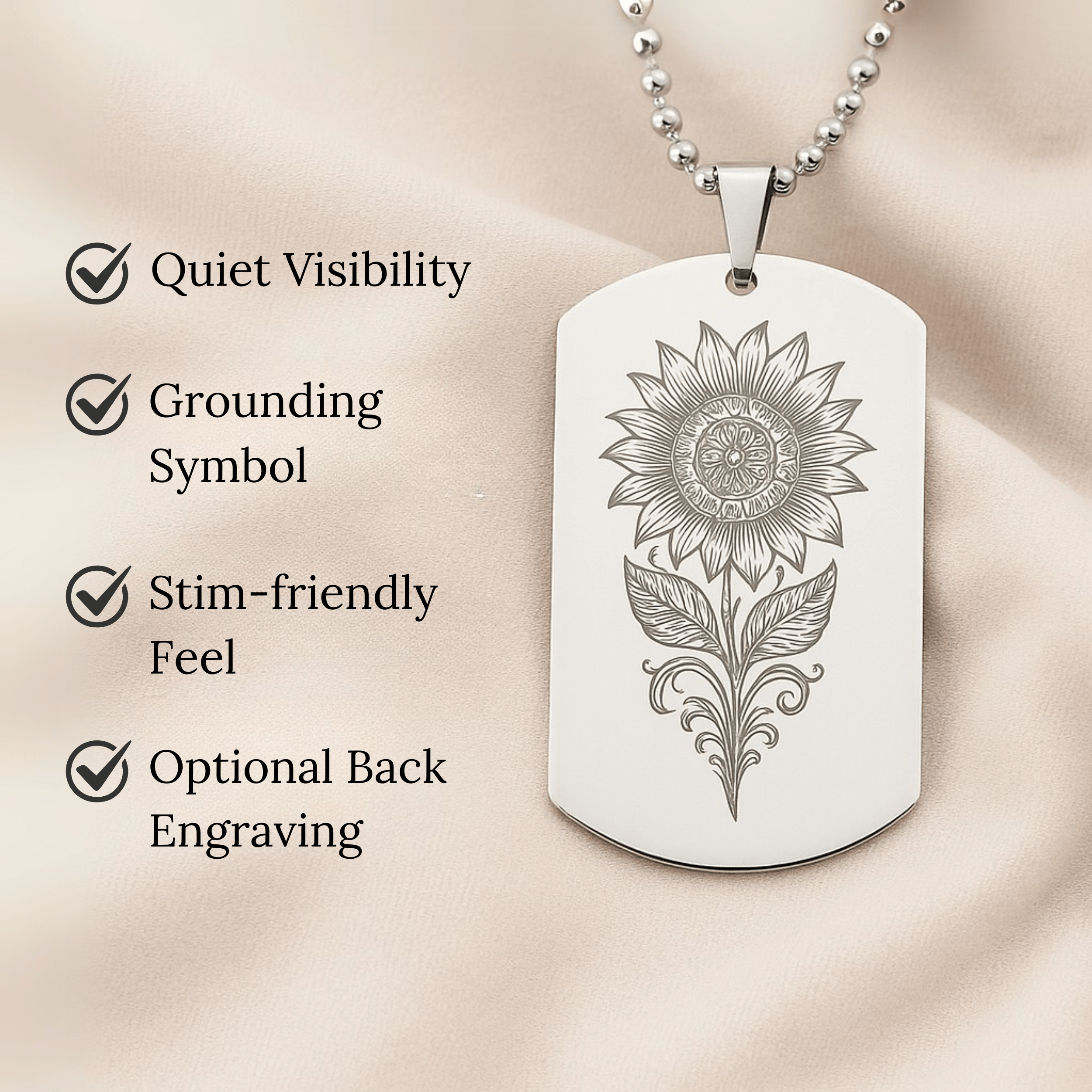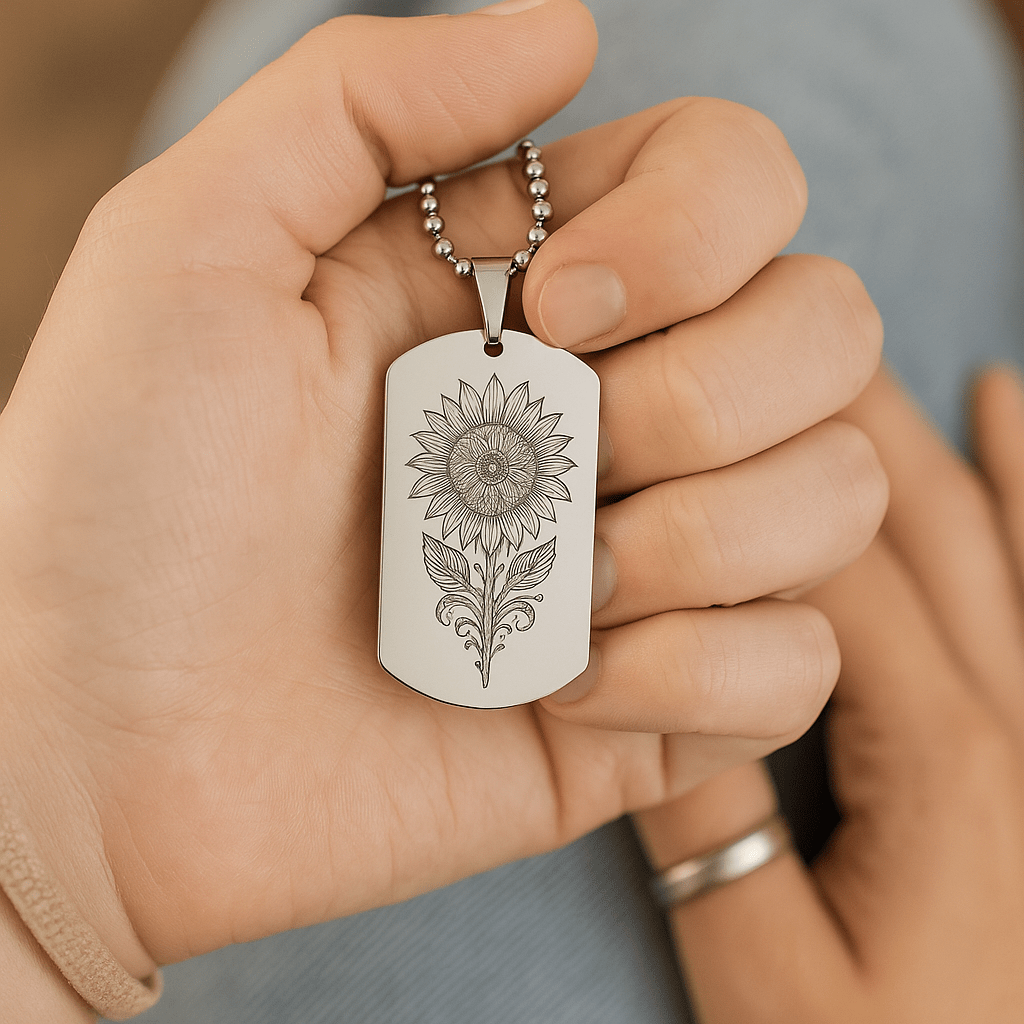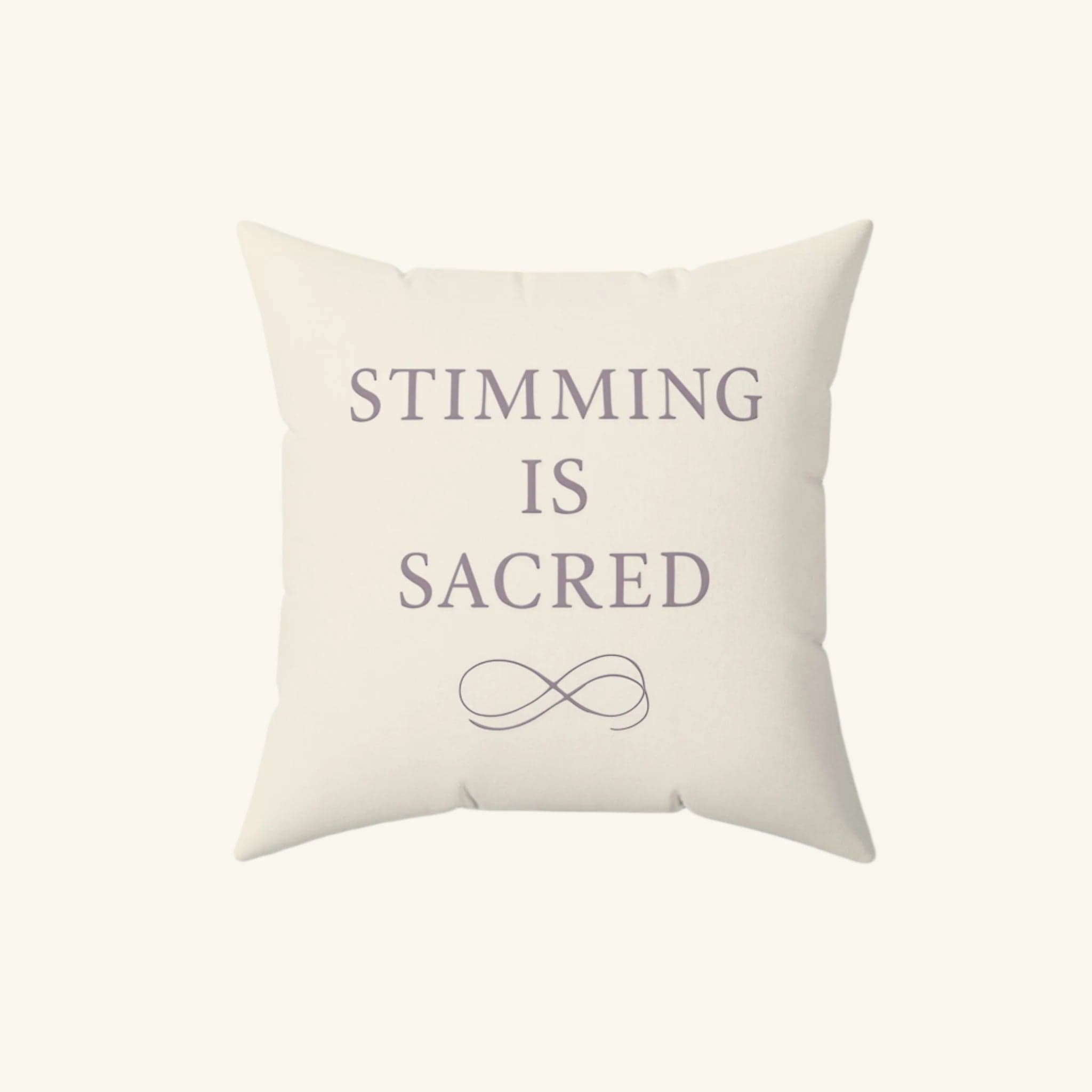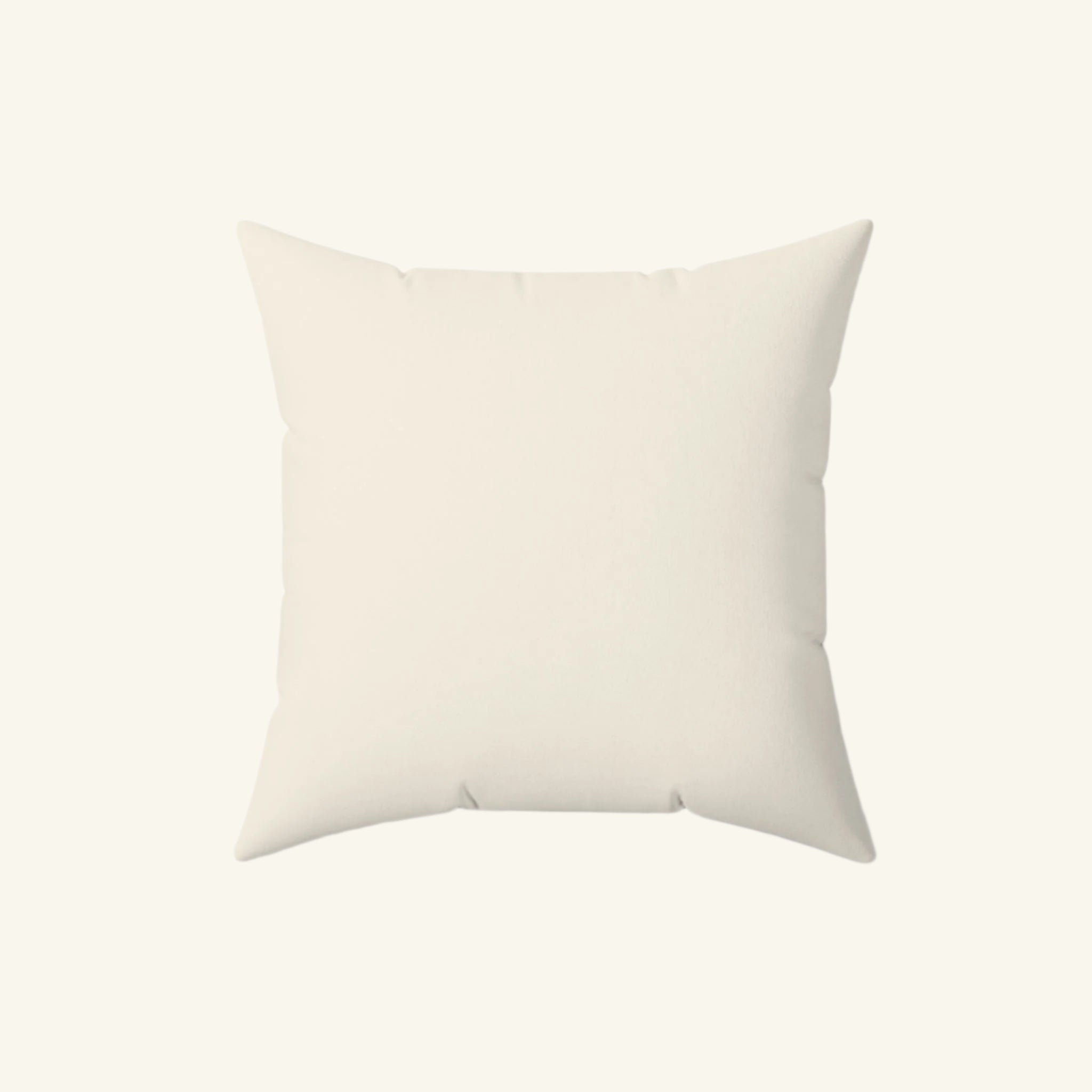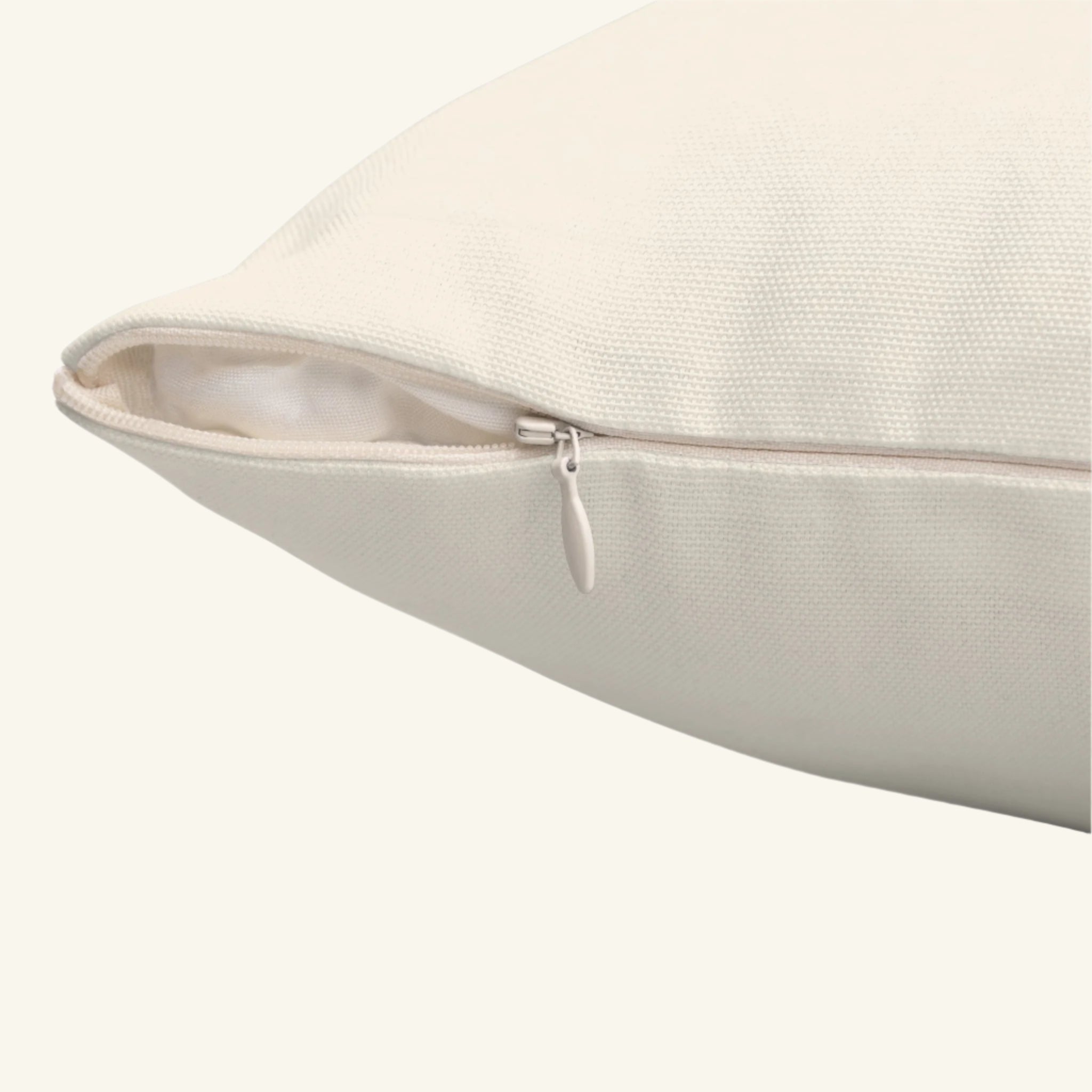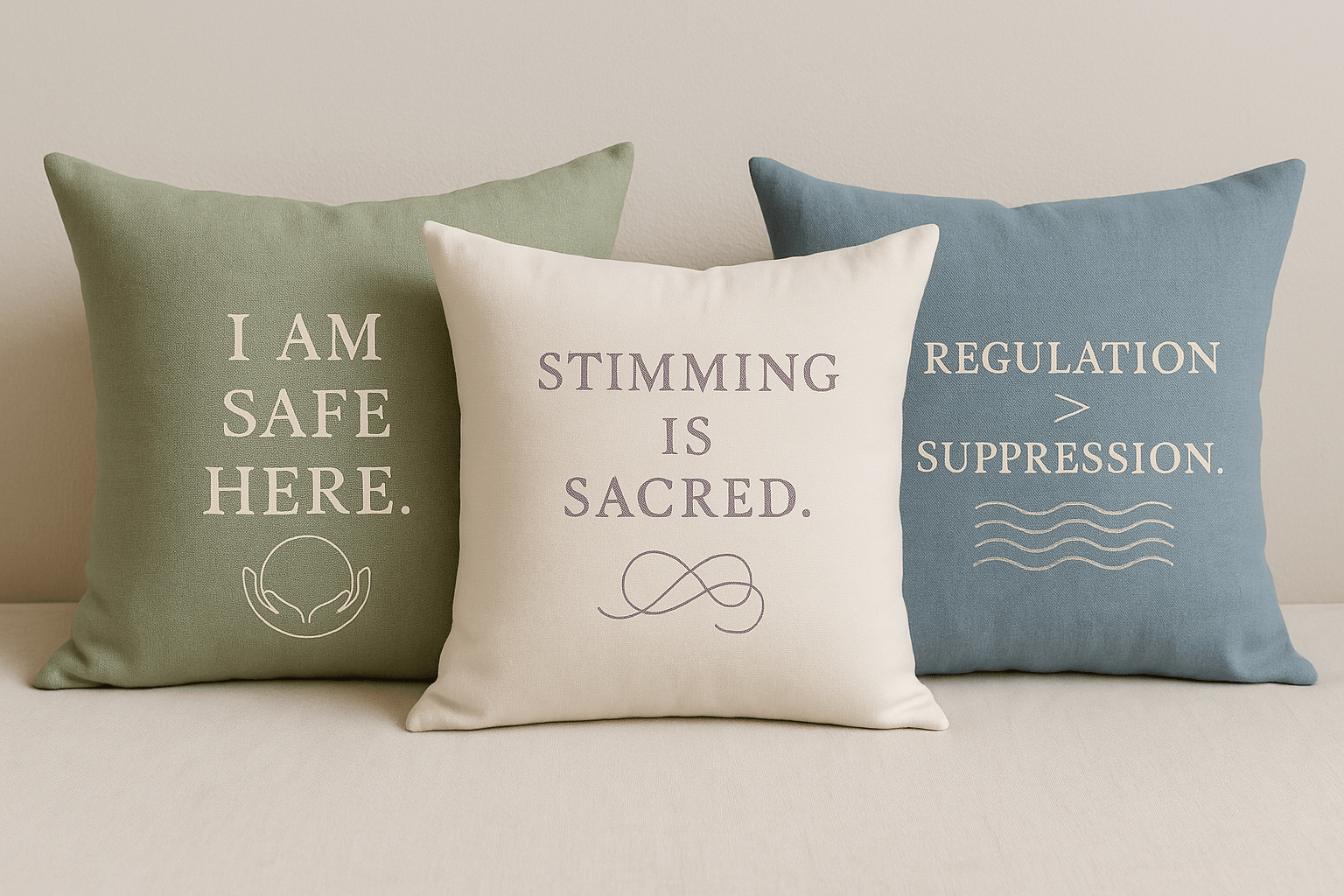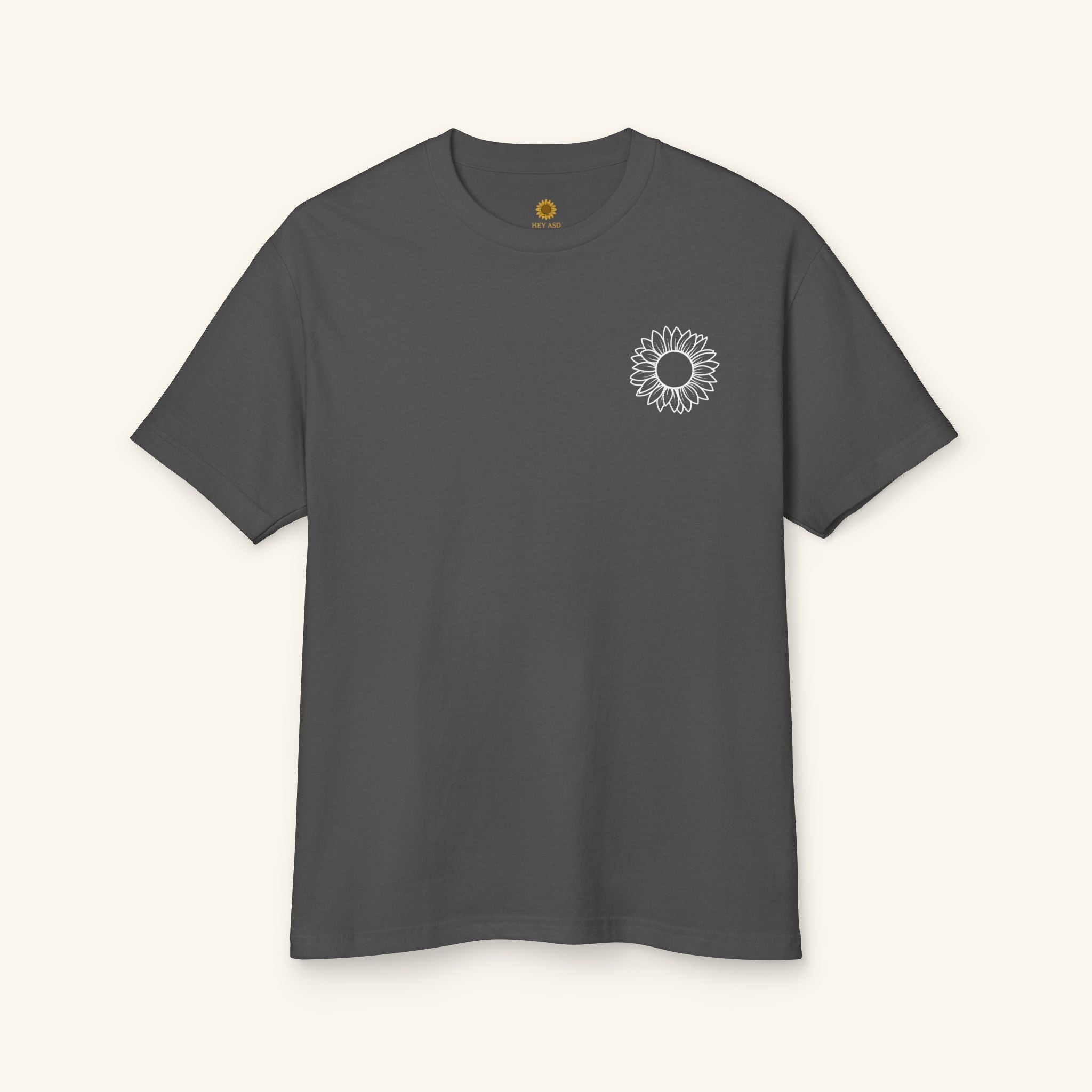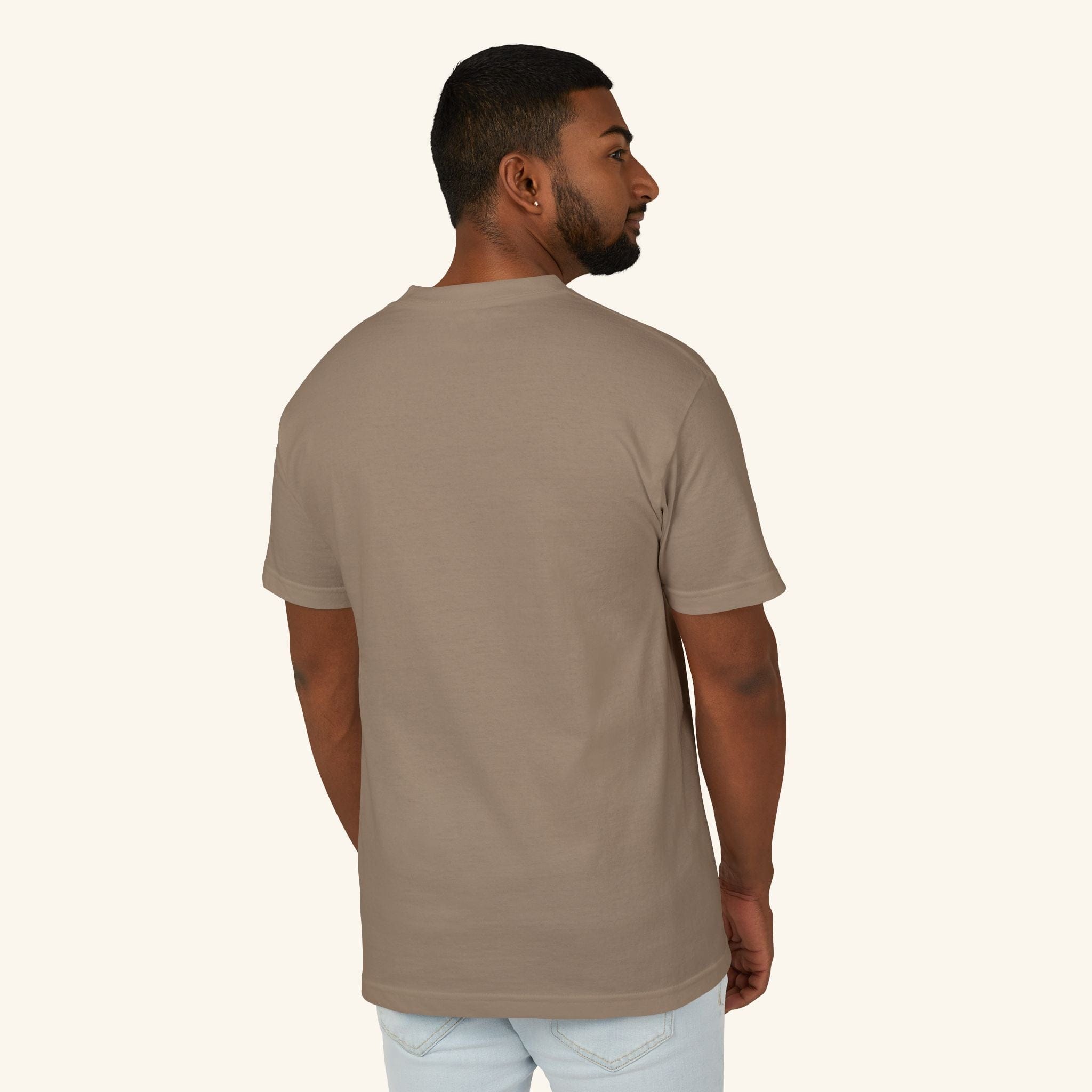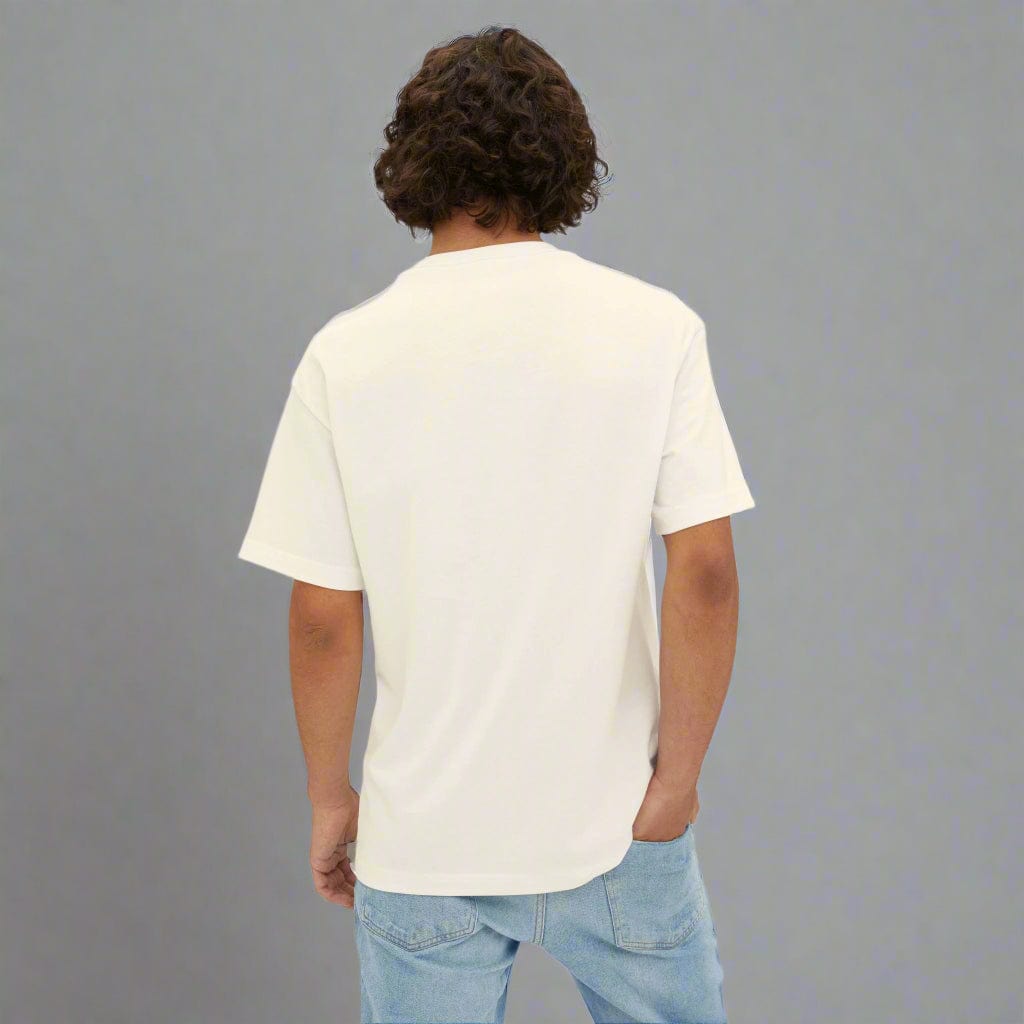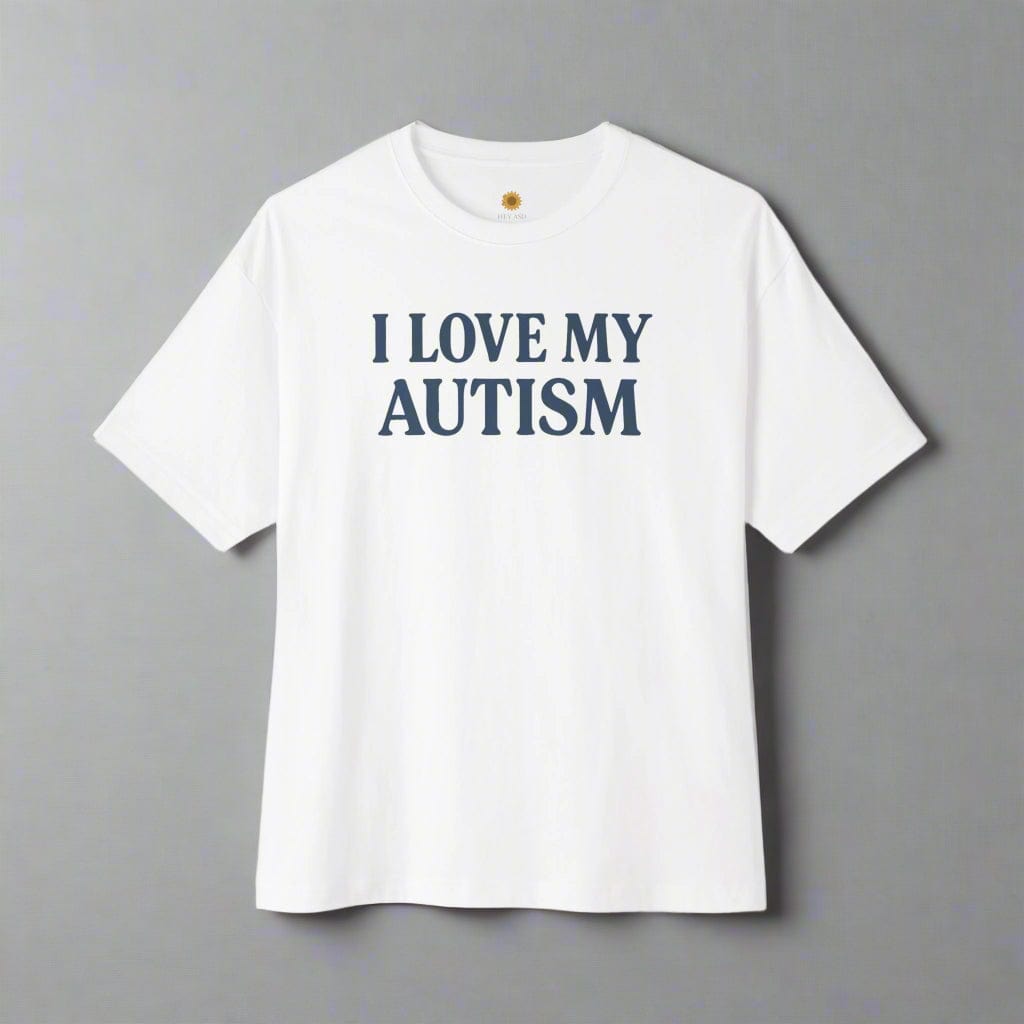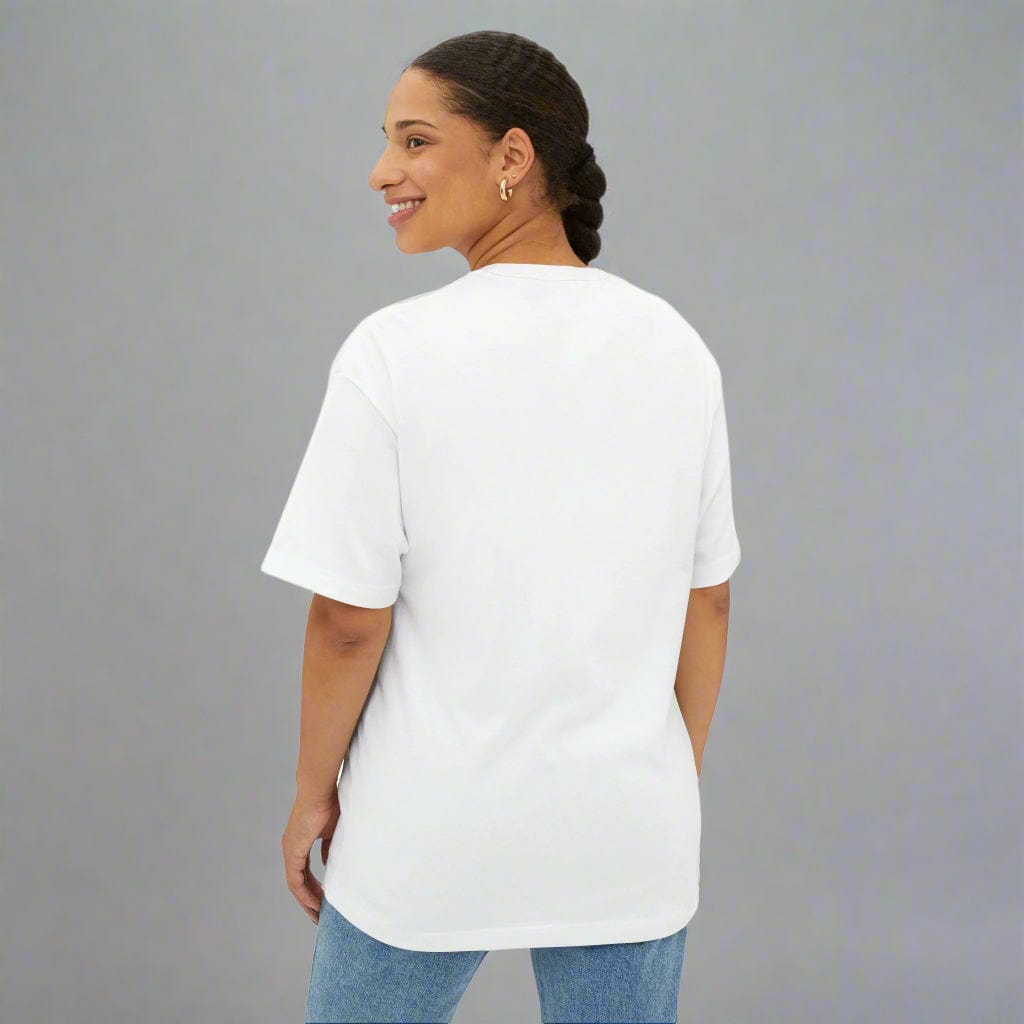The Science of Comfort: How Sensory Blankets Support Autistic Minds and Bodies

Written by the HeyASD Editorial Team
For many of us in the autism community, rest doesn’t always come easily. The body can hold tension from a long day, and the mind might race, making it hard to find stillness. A sensory blanket offers more than warmth—it provides the deep, steady comfort that helps you feel safe in your own skin.
“I didn’t realize how much tension I was carrying until I felt it ease beneath the weight of my sensory blanket. It was the first time in a long while that my body felt listened to.”
These blankets are more than just bedding—they’re calming aids designed to bring a sense of grounding and peace. Through the gentle power of deep pressure, a sensory blanket helps you reconnect with your body, soothe an overstimulated nervous system, and rediscover the comfort you deserve.
What Is a Sensory Blanket?
A sensory blanket is a therapeutic tool designed to provide deep pressure input across your body. This steady, gentle pressure feels like a firm, comforting hug, helping to calm and organize the nervous system. The goal is to provide soothing sensory feedback that can reduce feelings of being overwhelmed.
There are different types, including weighted blankets filled with beads, compression blankets that stretch snugly around you, and even body socks that envelop your entire frame. Each one offers a unique form of proprioceptive comfort to help you feel more grounded and secure. When buying your first one, consider what type of pressure feels best to you.
Key Features of Sensory Blankets for Adults, Children, and Seniors
Sensory blankets are versatile tools suitable for a wide range of ages, from children to seniors. Their core function is to provide deep pressure therapy, which has a universally calming effect. For children, a weighted blanket can help with focus in a classroom setting or create a peaceful bedtime routine. For autistic adults, it can be a key part of managing sensory sensitivities and preventing autistic burnout. Seniors may also find the gentle pressure comforting and relaxing.
The design of these therapy blankets often includes features that cater to different needs. The weight is evenly distributed to ensure the pressure is consistent and not overwhelming. Materials are chosen for both durability and comfort, recognizing that texture is a key part of the sensory experience.
Key features often include:
-
Evenly distributed weight for consistent deep pressure.
-
Soft, sensory-friendly fabrics like minky or cotton.
-
Duvet-style covers for easy washing.
-
Multiple weight and size options to fit different bodies.
How Sensory Feedback and Deep Pressure Work
The magic of a sensory blanket lies in its ability to provide steady sensory feedback through deep pressure touch stimulation. When you wrap yourself in a weighted or compression blanket, the gentle pressure sends signals to your brain that help calm your nervous system. This process is similar to the feeling of being held or hugged, which is naturally soothing for most people.
This deep pressure input helps your body release serotonin, often called the "happy hormone." Serotonin plays a crucial role in regulating mood and promoting a sense of calm and relaxation. As serotonin levels increase, your body can more easily transition into a restful state, making it easier to unwind after a stressful day.
For autistic people, this sensory feedback can be especially supportive. It helps organize a nervous system that might be overwhelmed by other sensory "noise," reducing the need for stimming to self-regulate and creating a feeling of safety. The firm pressure provides clear proprioceptive information, helping you feel more aware of and connected to your body.
The Science Behind Deep Pressure Stimulation
Deep pressure touch stimulation is the scientific principle that makes sensory blankets so effective. It involves applying firm but gentle pressure to the body, which activates the parasympathetic nervous system. This is the part of your nervous system responsible for the "rest and digest" response, counteracting the "fight or flight" mode that can be triggered by stress and anxiety.
This activation helps your body regulate its internal state. For individuals with sensory processing differences, this external, calming input can make a world of difference. It provides a clear, grounding sensation that helps filter out overwhelming sensory information, leading to a state of calm. We'll now look at how this affects key hormones and your overall wellbeing.
Calming Effects on the Nervous System: Serotonin, Melatonin, Cortisol
The deep pressure from a sensory blanket has a direct impact on your body's chemistry, helping you find a state of relaxation. It encourages your brain to produce neurotransmitters that regulate your mood and sleep cycles, while reducing stress hormones. This chemical shift is a key reason why these blankets feel so calming.
When your body is under pressure from a weighted blanket, it can trigger a cascade of helpful hormonal changes. The most significant of these is the release of serotonin, a neurotransmitter that contributes to feelings of happiness and wellbeing. This boost in serotonin naturally helps you feel more relaxed and at ease.
This process also influences other important hormones:
-
Serotonin: Deep pressure can increase serotonin production, which helps stabilize your mood.
-
Melatonin: Serotonin is a precursor to melatonin, the hormone that tells your body it's time to sleep.
-
Cortisol: The calming effect of deep pressure can help reduce levels of cortisol, the body's primary stress hormone.
Sensory Regulation, Proprioceptive Comfort, and Emotional Wellbeing
Sensory regulation is the ability of your nervous system to manage and respond to incoming sensory information. For many autistic people, this process can be challenging, leading to feelings of being overwhelmed. A sensory blanket provides consistent deep pressure input, which helps the nervous system organize this information and find a state of balance.
This is where proprioceptive comfort comes in. Proprioception is your body's awareness of its position in space. The firm pressure from a sensory blanket enhances this awareness, creating a feeling of being securely anchored and grounded. This can be incredibly reassuring when you're feeling disconnected or overstimulated, helping to quiet both a busy mind and a restless body.
Ultimately, this physical grounding contributes directly to your emotional wellbeing. By providing a reliable source of calming sensory input, the blanket becomes a tool for self-soothing. It creates a safe space where you can decompress, recover from a long day, or simply rest, which is fundamental to maintaining emotional balance and preventing burnout.
Sensory Blankets vs Weighted Blankets vs Compression Blankets
While the terms are often used interchangeably, there are distinctions between sensory, weighted, and compression blankets. "Sensory blanket" is a broad category for any blanket designed to provide therapeutic sensory input. Weighted blankets are the most common type, using extra weight to provide deep pressure therapy.
Compression blankets, on the other hand, provide pressure through stretch and snugness rather than weight. Each style offers a different kind of comfort, catering to unique sensory preferences. Understanding these differences can help you choose the best tool for your needs, whether you prefer the heavy grounding of a weighted therapy blanket or the tight hug of compression.
Differences in Design, Function, and Sensory Support
The primary difference between these styles lies in how they deliver pressure and the type of sensory support they offer. A weighted blanket uses materials like glass beads or plastic pellets to create heaviness, which provides deep pressure input. This is ideal for someone who finds weight grounding and calming.
A compression blanket is made from a stretchy, spandex-like material. It functions by stretching snugly around your body, providing a constant, reassuring squeeze. This is perfect for those who enjoy tight hugs but may not like the feeling of extra weight. A body sock is similar but envelops the entire body, offering a complete cocoon of pressure.
Each design serves a unique sensory need. The choice depends on your personal preference for weight versus stretchy pressure.
|
Feature |
Weighted Blanket |
Compression Blanket |
Body Sock |
|---|---|---|---|
|
Mechanism |
Uses added weight (beads, pellets) for pressure. |
Uses stretchy fabric for pressure. |
Uses stretchy fabric to enclose the body. |
|
Sensation |
Feels like a heavy, grounding layer on top of you. |
Feels like a tight, consistent hug. |
Feels like being fully enveloped in a hug. |
|
Best For |
Calming, sleep, staying in one place. |
Anxiety, restlessness, active calming. |
Active sensory play, full-body feedback. |
Unique Roles of Weighted, Compression, and Body Sock Styles
Each style of sensory blanket plays a unique role in providing comfort and regulation. The specific sensation you prefer will guide you to the right choice for your needs. Exploring these differences is key to finding your perfect calming tool.
Weighted blankets are excellent for promoting stillness and rest. The extra weight is designed to ground your body, making them a popular choice for improving sleep or for calming down during periods of high stress. They act like a stationary, heavy hug.
On the other hand, compression blankets and body socks offer a more dynamic experience. They provide pressure through tension and are great for those who might feel too restricted by heavy weight.
-
Weighted Blankets: Best for stationary calming, such as during sleep, reading, or watching TV. The consistent weight can be very soothing.
-
Compression Blankets: Ideal for those who like pressure but also need to move. They provide a snug feeling without the heaviness.
-
Body Sock: A tool for both calming and active sensory input. You can stretch and move within it, making it great for sensory breaks.
How to Choose the Right Sensory Blanket
Choosing the right sensory blanket is a personal journey, as everyone's sensory needs are different. The goal is to find a blanket that provides a "just right" feeling of comfort and security. Key factors to consider include the blanket's weight, the materials it's made from, and the style of pressure it provides.
For children, it's important to select a blanket they can move under independently. While there are general guidelines, the best choice is always the one that feels most comfortable to the user. We will explore the specifics of weight, materials, and style to help you make an informed decision for yourself or your child.
Weight Guide and Choosing for Comfort and Sensory Sensitivity
A common rule of thumb for weighted therapy blankets is to choose one that is about 10% of your body weight. For example, a 150-pound person might start with a 15-pound blanket. This guideline is a great starting point, but it’s not a strict rule. Personal preference is the most important factor.
Some people prefer a little extra weight for a more grounded feeling, while others might find a lighter blanket more comfortable. If you’re unsure, it’s often better to start on the lighter side. The goal is to feel comfortably hugged, not trapped or restricted. You should always be able to move the blanket off yourself easily.
When choosing, remember these points:
-
Start with the 10% rule of thumb: Use this as a guide, not a requirement.
-
Prioritize comfort: The blanket should feel good to you. If the recommended weight feels too heavy, go lighter.
-
Safety first: Ensure the user can lift and move the blanket independently. This is especially important for children.
Materials, Texture, Breathability, and Tagless Design Considerations
The material of your sensory blanket is just as important as its weight, especially for those with sensory sensitivities. The texture of the fabric can either add to the comfort or become a source of irritation. Soft materials like minky, fleece, and cotton are popular choices because they feel gentle against the skin.
Breathability is another crucial factor. A blanket that traps too much heat can become uncomfortable, particularly during sleep. Natural fibers like cotton or bamboo are excellent for promoting airflow and keeping you cool. For autistic adults and children, small details can make a big difference. A tagless design, for example, eliminates a common source of sensory irritation.
When selecting a material, consider the following:
-
Texture: Choose fabrics that feel pleasant to you, like soft minky or smooth cotton.
-
Breathability: Look for materials that won't cause overheating, such as cotton or bamboo.
-
Washability: A removable, machine-washable cover makes cleaning simple and convenient.
-
Tagless Design: A tagless blanket avoids scratchy, irritating labels.
Style: weighted, compression, or body sock.
Weighted blankets are designed to distribute gentle, even pressure across the body, simulating the sensation of a comforting hug. This deep touch pressure stimulation can trigger the release of serotonin and dopamine—neurotransmitters that promote feelings of well-being and relaxation—while also reducing levels of cortisol, the stress hormone. As a result, weighted blankets are often used to help manage symptoms of anxiety, insomnia, and sensory processing disorders.
Compression blankets work on a similar principle but typically offer more targeted or adjustable pressure. They gently press against the body in a way that can be especially beneficial for individuals who crave consistent, firm input to help regulate their nervous systems. These blankets are frequently recommended for people with autism spectrum disorder (ASD) or attention deficit hyperactivity disorder (ADHD), as they can help improve focus and provide comfort during overwhelming situations.
Body socks take sensory support a step further by enveloping the entire body in a stretchable fabric sleeve. This creates a snug cocoon-like effect that provides intense proprioceptive feedback—the sense of body position in space—which is crucial for self-regulation and calming overstimulated nervous systems. Body socks encourage movement while maintaining resistance, making them useful not only for relaxation but also for therapeutic activities aimed at improving coordination and motor planning.
Choosing between these options comes down to personal preference and specific sensory needs. Some people may prefer the steady weight of a blanket during sleep, while others might find the all-encompassing squeeze of a body sock more effective during moments of high stress or when engaging in sensory play. For children and adults alike, integrating these tools into daily routines—whether at home, school, or work—can promote better emotional regulation, enhance concentration, and foster an overall sense of safety and well-being.
It's important to consult with occupational therapists or healthcare professionals when selecting sensory tools like weighted blankets or compression products to ensure they're appropriate for individual needs and used safely. Proper usage can transform daily life by offering comfort and empowering individuals to better navigate challenging sensory environments.
Factors for autistic sensitivity: seams, breathability, tagless design
For the autism community, the small details in a product's design can determine whether it's a comfort tool or a source of distress. When it comes to sensory blankets, factors beyond weight and fabric type are crucial for a truly positive experience. Seams, for instance, can feel rough or lumpy against sensitive skin, so a well-made blanket will have smooth, flat seams.
Breathability is also non-negotiable. Many autistic people have difficulty with temperature regulation, and a blanket that causes overheating will disrupt rest rather than promote it. Look for fabrics that allow air to circulate. A tagless design is another simple but vital feature, removing the scratchy annoyance that tags often cause.
When shopping, pay close attention to these details designed for autistic comfort:
-
Smooth Seams: Ensure there are no bulky or scratchy seams that could cause irritation.
-
Good Breathability: Choose materials that help regulate temperature and prevent overheating.
-
Tagless Design: Look for blankets without tags for a completely smooth feel.
-
Quiet Filling: The weighted material inside should not make noise when you move.
Sensory Blankets vs Weighted Blankets
The terms "sensory blanket" and "weighted blanket" are often used as if they mean the same thing, but there's a subtle and important difference. "Sensory blanket" is a broad, inclusive term that covers any blanket designed to provide therapeutic sensory input. This can include blankets with different textures, materials, or methods of applying pressure. It’s a category of comfort tools.
A weighted blanket is a specific type of sensory blanket. Its primary feature is its weight, which is used to provide deep pressure therapy. While all weighted blankets are sensory blankets, not all sensory blankets are weighted. The category also includes other styles, like compression blankets and body socks, which use stretch instead of weight. Understanding this helps clarify the wide range of options available for sensory comfort.
Explain the difference (weighted = heavy, sensory = broader comfort concept).
Weighted blankets primarily provide a heavy feeling that promotes calm through deep pressure therapy. This extra weight is beneficial for those seeking to alleviate anxiety or restlessness. In contrast, sensory blankets encompass a broader comfort concept, offering various textures and designs tailored to individual preferences. They focus on a wide range of sensory inputs, catering to diverse needs, including relaxation, grounding, and emotional support. By understanding these distinctions, selecting the right type for your comfort becomes easier and more personalized.
Mention compression blankets and body socks as cousins.
Compression blankets and body socks can be viewed as supportive cousins in the realm of sensory tools. Both styles offer a comforting embrace that promotes a sense of safety and calm through deep pressure input. While compression blankets envelop the user in gentle, consistent pressure, body socks provide a playful, enclosed space that allows for movement and exploration. Together, they create unique sensory experiences, helping many of us find grounding in our busy lives. Exploring these options can lead to enhanced relaxation and emotional regulation.
How to Use a Sensory Blanket
Using a sensory blanket is wonderfully simple and can be integrated into many parts of your daily routine. It’s a versatile tool for finding calm whenever and wherever you need it. You can use it to help you fall asleep at night, drape it over your lap while working to improve focus, or wrap yourself in it after a long day to decompress. The gentle pressure signals to your body that it's time to relax.
There's no right or wrong way to use it, as long as it feels good to you. Many people find it helpful during moments of high stress or after a meltdown to help their nervous system recover. The key is to listen to your body and use the blanket as a tool to give yourself the comfort you need. We'll now cover some specific uses and important safety tips.
For sleep, relaxation, work, or post-meltdown recovery.
Comfort can be essential for various moments, whether seeking restful sleep, finding relaxation during busy days, or navigating the aftermath of overwhelming emotions. Using sensory blankets during these times provides deep pressure therapy that calms the nervous system, allowing for a smoother transition back to emotional balance. For individuals needing support in work settings or post-meltdown recovery, these tools can enhance focus and ease anxiety. Prioritizing comfort and self-care empowers individuals to thrive, creating a safe space when life feels too intense.
Caring for Your Sensory Blanket
Safety should always come first when using sensory blankets. For washing, check the manufacturer’s care instructions; many can be machine washed on a gentle cycle. Use cold water to maintain fabric quality and preserve deep pressure benefits. Avoid bleach or harsh detergents to keep the texture soft. Ensuring the blanket is properly dried is essential—air drying is preferred to prevent shrinkage. Regularly inspecting for wear and tear can enhance safety, ensuring that the blanket remains a comforting tool for relaxation.
Community Voices: What Sensory Blankets Feel Like in Real Life
Sensory blankets aren’t about “fixing” anyone. For many autistic adults, they’re a simple, reliable way to feel grounded, quiet a busy mind, and come back to center after a long day. Here are a few lived-experience reflections shared within our community:
“I didn’t realize how much tension I was holding until I felt it ease under the steady weight. It was the first time my body felt truly listened to.”
“When everything is loud, the blanket gives me a clear signal of safety. It’s like my nervous system finally gets permission to slow down.”
“I use it after work or before sleep. The deep pressure helps me transition, and I wake up less exhausted the next day.”
These stories echo a common pattern: predictable, deep pressure can help restore calm, support sensory regulation, and make rest more accessible. Comfort isn’t indulgence—it’s care.
Comfort is Self-Care, Not a Luxury
In a world that often prioritizes productivity over wellbeing, it’s easy to view comfort as an indulgence. But for autistic adults, comfort is not a luxury—it is a fundamental aspect of self-care. Providing your nervous system with what it needs to feel safe and regulated is as essential as eating or sleeping. It is a necessary practice for maintaining emotional and physical health.
Embracing tools like sensory blankets is an act of self-advocacy and empowerment. It’s about acknowledging your sensory needs and actively meeting them. This shift in perspective—from seeing comfort as a treat to understanding it as a vital part of your wellbeing—is transformative. It allows you to build a life that supports, rather than depletes, your energy.
How Sensory Comfort Supports Emotional Wellbeing
Embracing comfort plays a vital role in emotional well-being and autistic empowerment. Creating a space where relaxation and safety are prioritized fosters resilience and self-acceptance. Many in the community find that sensory blankets offer deep pressure input, which can soothe heightened emotions and restore a sense of calm. By recognizing the importance of such tools, we take strides toward a more inclusive environment where comfort is seen not as an indulgence but as a necessary foundation for thriving in everyday life.
Encourage embracing comfort as valid and necessary.
Comfort is essential, not just a luxury. Embracing the soothing touch of sensory blankets can validate personal experiences and foster emotional resilience. Many of us thrive when we prioritize our comfort, recognizing it as a crucial aspect of self-care. This practice aligns closely with the principles of neurodiversity, empowering us to honor our unique needs. By integrating calming tools into our lives, we enhance our well-being and cultivate a supportive environment that celebrates our individuality and shared experiences.
Everyday Uses and Benefits for Autism, Anxiety, and Rest
Sensory blankets offer practical, everyday benefits for managing the challenges of autism, anxiety, and finding true rest. Their ability to provide deep pressure makes them an effective, non-pharmaceutical tool for calming a heightened nervous system. Whether used as a sleep aid or a tool for stress relief during the day, their impact can be profound.
For many autistic adults, a sensory blanket becomes an essential part of their routine for preventing overstimulation and recovering from burnout. It creates a predictable, safe sensory experience that can help ground you in moments of unease.
Sleep Aid, Stress Relief, Calming Tools for Autistic Adults
For many autistic adults, getting high-quality sleep can be a challenge. A racing mind or a restless body can make it difficult to fall and stay asleep. A sensory blanket can act as a powerful sleep aid by providing deep pressure input that helps calm the nervous system, making it easier to transition into a state of rest.
As a stress relief tool, a sensory blanket can be used anytime you feel overwhelmed or anxious. Draping it over your shoulders or lap can provide an immediate sense of grounding, helping to lower cortisol levels and ease feelings of panic. It’s like having a portable hug ready whenever you need it.
These blankets are versatile calming tools:
-
Improved Sleep: Helps you fall asleep faster and stay asleep longer.
-
Anxiety Reduction: Offers a physical sensation of safety during stressful moments.
-
Focus Enhancement: The grounding pressure can reduce restlessness during seated tasks.
-
Sensory Regulation: Provides predictable input to prevent or recover from overstimulation.
Lived Experiences: Burnout Recovery, Relaxation, and Self-Care
Autistic burnout is a state of profound exhaustion that comes from the cumulative stress of navigating a world not designed for autistic neurology. Lived experiences from the community show that sensory tools are vital for both preventing and recovering from burnout. A sensory blanket provides a sanctuary for true relaxation, allowing the nervous system to finally stand down.
Incorporating a sensory blanket into a self-care routine is a tangible way to prioritize rest. It's an invitation to take a moment for yourself, to intentionally engage in an activity that replenishes your energy rather than drains it. This simple act can be a cornerstone of a sustainable, healthy life.
These tools support wellbeing by:
-
Aiding Burnout Recovery: Creating a low-demand, restful environment for the nervous system to heal.
-
Promoting Deep Relaxation: Signaling to the body that it is safe to let go of tension.
-
Facilitating Self-Care: Making rest an intentional and accessible part of your daily routine.
Key Takeaways
- Sensory blankets use gentle deep pressure to calm the nervous system and promote relaxation.
- They can support autistic adults with sensory regulation, anxiety, and burnout recovery.
- Weighted, compression, and body sock styles each offer unique types of proprioceptive comfort.
- Choosing the right blanket depends on weight, fabric texture, and individual sensory preferences.
- Comfort is not a luxury—it’s a valid and vital part of self-care and emotional well-being.
Conclusion
Sensory blankets aren’t just tools—they’re invitations to rest. They offer a way for autistic adults and others with sensory sensitivities to feel grounded, safe, and deeply seen. By embracing the science of deep pressure and the art of comfort, these blankets can help you regulate, unwind, and reconnect with yourself.
“When I pull my sensory blanket over me, it’s not about escaping the world—it’s about returning to myself.”
Choosing a sensory blanket is an act of self-care and self-trust. It’s a reminder that comfort is not indulgence—it’s essential. Explore our Sensory Blanket Collection to find one that feels just right for your body and your story.
Experience the Calm You Deserve
Discover sensory blankets designed for autistic comfort — soft, grounding, and made to soothe your nervous system.
Shop Sensory BlanketsFrequently Asked Questions
Can sensory blankets help with anxiety or dementia?
Yes, sensory blankets can be very effective for anxiety. The deep pressure therapy they provide helps calm the nervous system and reduce stress hormones. This grounding effect can also be comforting for individuals with dementia, helping to ease agitation and promote a sense of security and relaxation.
What materials are best for sensory-sensitive people?
For people with sensory sensitivities, soft, natural, and breathable fabrics are best. Materials like minky, cotton, fleece, and bamboo are popular choices. Look for features like a tagless design and smooth seams to avoid irritation. A removable, washable cover is also a practical feature for easy care.
Where can I buy high-quality sensory blankets online?
You can find high-quality sensory blankets designed for autistic comfort right here at HeyASD. Our collection of therapy blankets and weighted blankets is curated to meet the unique sensory needs of our community. Explore our online autism store to find the perfect blanket to support your wellbeing.
What are sensory blankets and how do they work to provide comfort?
Sensory blankets are therapeutic tools that use deep pressure therapy to create a feeling of calm and comfort. They work by applying gentle, consistent weight or pressure to the body, which feels like a firm hug. This helps soothe the nervous system, reduce stress, and promote relaxation.
How can sensory blankets benefit individuals with anxiety or sensory processing disorders?
Sensory blankets can be highly beneficial by providing deep pressure touch stimulation. This input helps calm an overactive nervous system, which can reduce feelings of anxiety and help regulate sensory processing. The result is a greater sense of calm, focus, and overall relaxation.
How do I choose the right size and weight for a sensory blanket?
A good rule of thumb is to choose a weighted therapy blanket that is about 10% of the user's body weight. However, personal comfort is most important. The blanket should feel pleasantly grounding, not trapping. Always ensure the user can move the blanket off themselves independently.
On This Page
Frequently asked questions
Are sensory blankets only for autistic individuals?
What’s the difference between a sensory blanket and a regular weighted blanket?
How heavy should my sensory blanket be?
Can sensory blankets help with autistic burnout or meltdowns?
Are sensory blankets safe for children or seniors?
Can sensory blankets improve sleep quality?
What materials are best for sensory blankets?
Can I use a sensory blanket year-round without overheating?
How do I wash or care for a sensory blanket?

About the HeyASD Editorial Team
Autistic‑owned • Values‑led • Sensory‑friendly design
We are autistic creators, writers, and advocates dedicated to producing resources that are practical, sensory-aware, and grounded in lived experience. Our mission is to make information and products that support the autistic community accessible to everyone, without jargon or condescension. Learn more about our team.
This article is written from lived autistic experience and an evidence-aware perspective. It is for general informational purposes only and should not be taken as medical, legal or therapeutic advice.
Always consult a qualified clinician or occupational therapist for individual needs and circumstances.

About Our Autism Blog
HeyASD isn’t just a store, it’s a calm, supportive space created by and for autistic adults. Our blog shares sensory-friendly tips, identity-affirming stories, and heartfelt resources for navigating life as an autistic person. Whether you're late-diagnosed, exploring your needs, or supporting someone you love, you're welcome here.
Thank you for reading. We hope these resources bring comfort and clarity.













